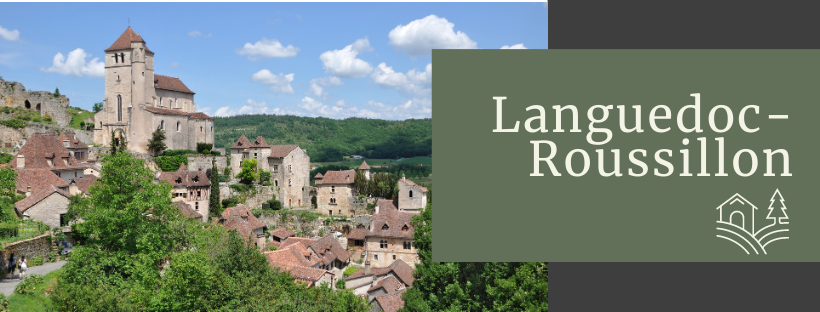Languedoc-Roussillon is the part of the French Mediterranean with a charm all of its own. One of its great assets is the amount of exciting geography in a relatively small area. From the wetlands of the Petite Camargue and its white horses and black bulls to the rugged jumble of the Côte Vermeille by the Spanish border. Endless sandy beaches and flamingo-filled lagoons fill the space in between. Inland, vines, parasol pines and Mediterranean scrub dominate a dramatic hinterland, characterised by highlands of causses and garrigue, chestnut and oak forests, wild gorges and mountains – the Cévennes, Montagne Noire and the Pyrenees – all only an hour’s drive from the coast.
A Brief History
The region thrived in Roman times, its main cities growing along the Italy-to-Spain Via Domitia: Montpellier, Nîmes, Béziers and Narbonne. By the early Middle Ages, what was known as “Languedoc” (then much of southern France) was an independent nation, home to a sophisticated, tolerant civilisation, inspired by the Moorish culture of Al-Andaluz in nearby Spain. It was the time of the troubadours, who made the local language, Occitan the first secular literary language in Europe – so much as that even Dante toyed with the idea using it for The Divine Comedy.
Disillusioned with the corruption of the medieval Church, many inhabitants of Languedoc adopted Catharism: a dualist take on Christianity, with some surprisingly modern ideas; women, for instance, had equal rights. In 1209, the Pope called a holy war known as the Albigensian Crusade against them that put an abrupt end to Languedoc’s precocious brilliance – as well as its independence.
Anything left of the Cathars?
Castles mostly, starting with the one in Carcassonne. This impregnable citadel was the seat of the Viscount Raymond-Roger Trencavel, who offered the Cathars protection from the Crusaders – until Simon de Montfort, their ruthlessly efficient captain, tricked the young viscount into leaving his impregnable stronghold, then imprisoned and poisoned him to seize his title and lands.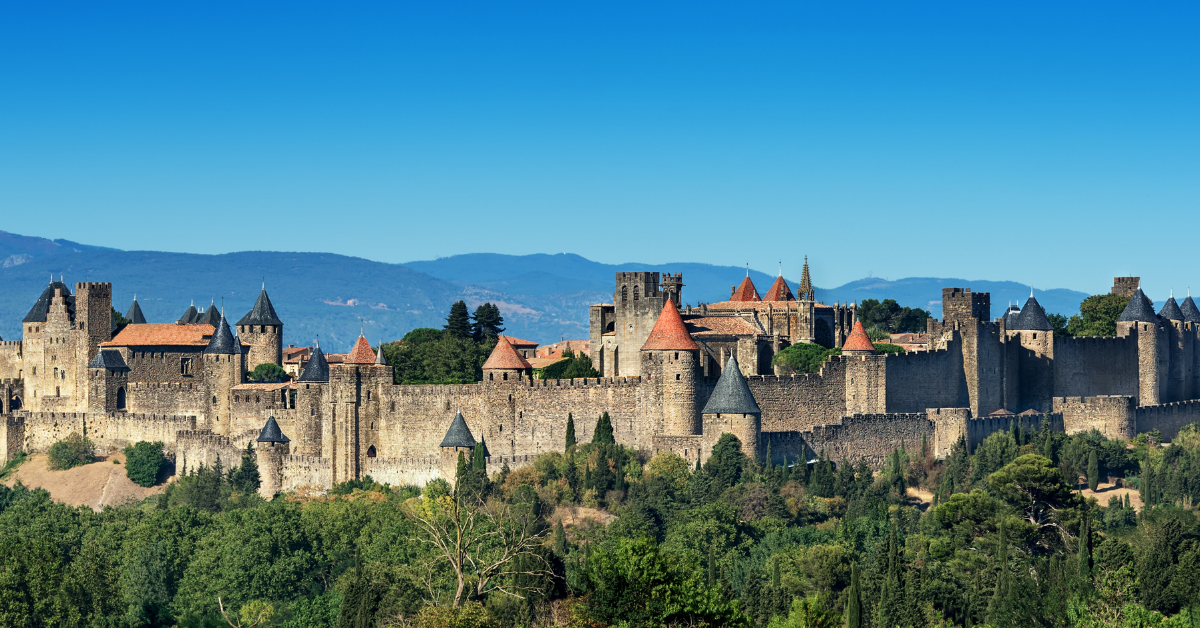
The walls and witch-hatted towers of the Cité of Carcassonne, restored in the 19th century, form a majestic fairy tale tiara over the Aude valley, today besieged by over a million visitors a year. Go early in the morning or out of season if you can. Visit the Château-Comtal and take a tour of the ramparts. Even after the capture and mass executions at Montségur in 1244, a few Cathars held out. South of Carcassonne, in the wilds of the Corbières, they took refuge in castles teetering on vertiginous pinnacles that have since fallen into splendid ruins. There are several to visit: the most spectacular are Quéribus and Peyrepetuse.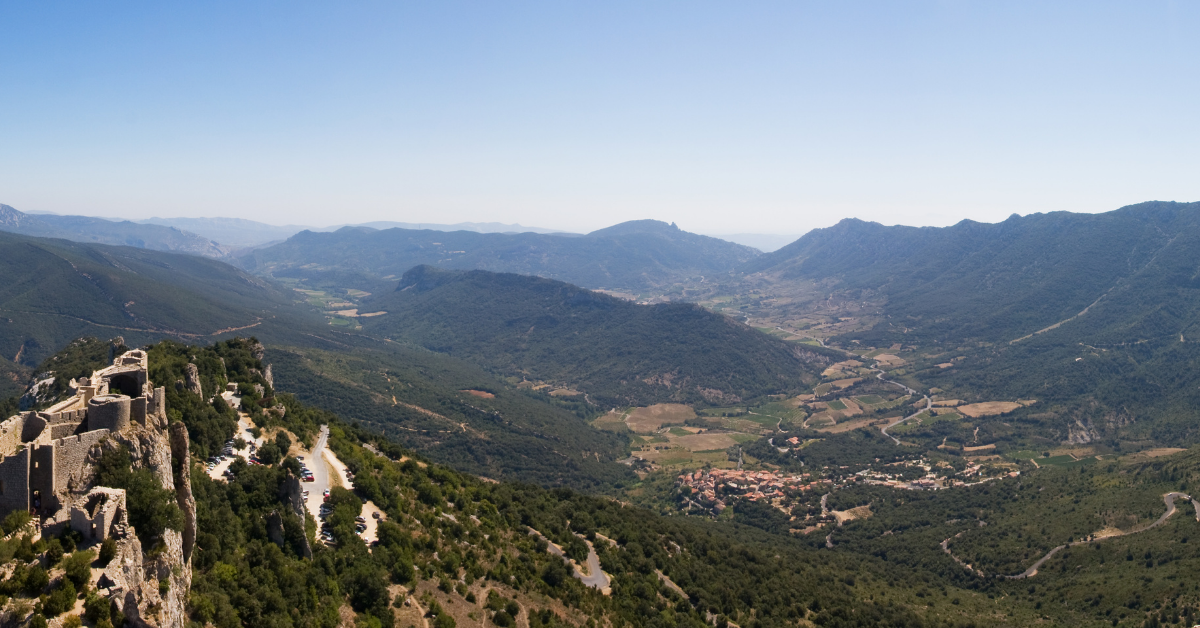
Rumour has it that a few Cathars slipped away to Rennes-le-Château and hid a secret treasure, which was later uncovered by the village priest, the Abbé Saunière. It’s one theory behind the mystery that captivated Holy Blood, Holy Grail fans; check it out at the Domaine de l’Abbé Saunière.
City lights?
Montpellier is the fastest-growing city in France. Home to a major university and a handsome 18th-century centre, Montpellier boasts the region’s best nightlife, shopping, and some great attractions. First, an excellent art collection in the Musée Fabre. Next, the wholly 21st-century Mare Nostrum Aquarium. Third, the flora- and fauna-filled Serre Amazonienne. If you can afford to splash out, eat at the fabled Le Jardin des Sens, headquarters of twin master chefs Jacques and Laurent Pourcel.
Nîmes, the “Rome of France”, is a gem, with a perfectly preserved Roman temple, the Maison Carrée and the Arènes – a Roman amphitheatre in better nick than the Colosseum. The city’s water was delivered by no less than a masterpiece of ancient engineering, the Pont du Gard, 16km north-east of town.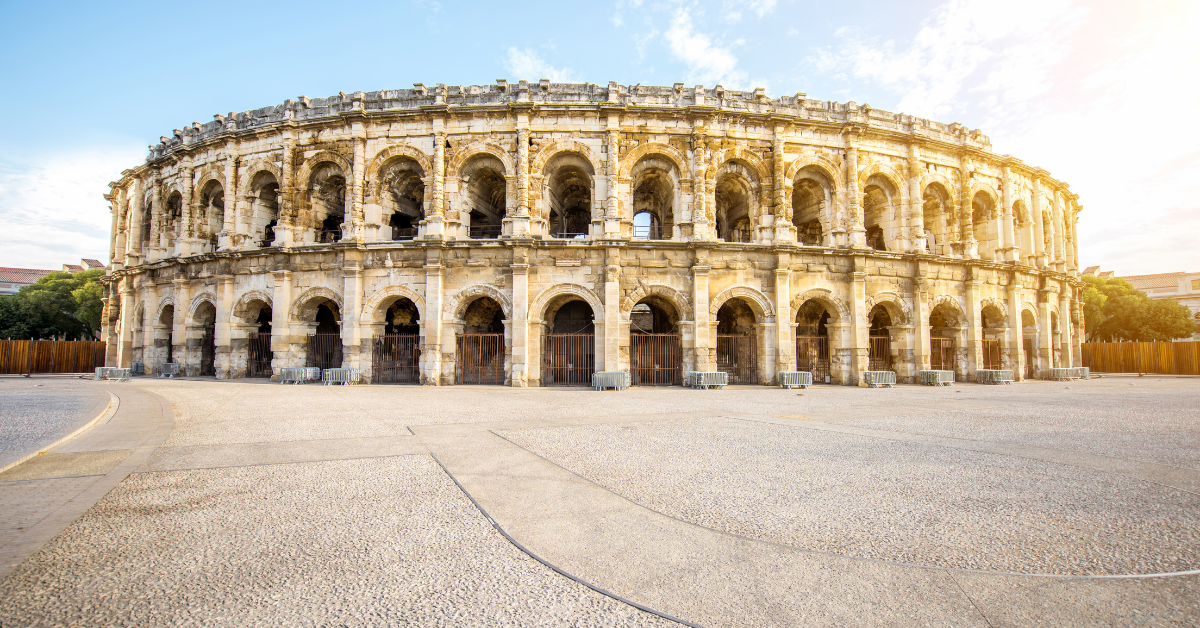
To the west, Béziers is the quintessential, non-twee Languedoc city. It makes a striking sight, piled under a huge Gothic cathedral that was built after the original burned in the infamous massacre of the Cathars (and everyone else) when the Papal legate allegedly ordered the Albigensian Crusaders: “Kill them all; God will know His own.”
Further west, Narbonne was Languedoc’s most important town into the Middle Ages; its centrepiece is the Gothic Cathedral and a fortified Episcopal Palace. The latter now houses excellent art and archaeology museums.
Perpignan is effectively the last city in France before the Spanish border, and has influences from both countries; the railway station has a monument to local Catalan hero Salvador Dali, who described la gare as “the centre of the universe”.
Something less busy?
Start with classy little Uzès, with its Pisa-style belltower, the Tour Fenestrelle, and unique ducal castle: Le Duché in the centre of town. Sommières, once residence of Lawrence Durrell, has a Roman bridge and lazy-boules-under-the-plane trees charms, while Pézenas, once capital of Languedoc, is full of handsome 17th-century buildings and memories of Molière, whose troupe performed here.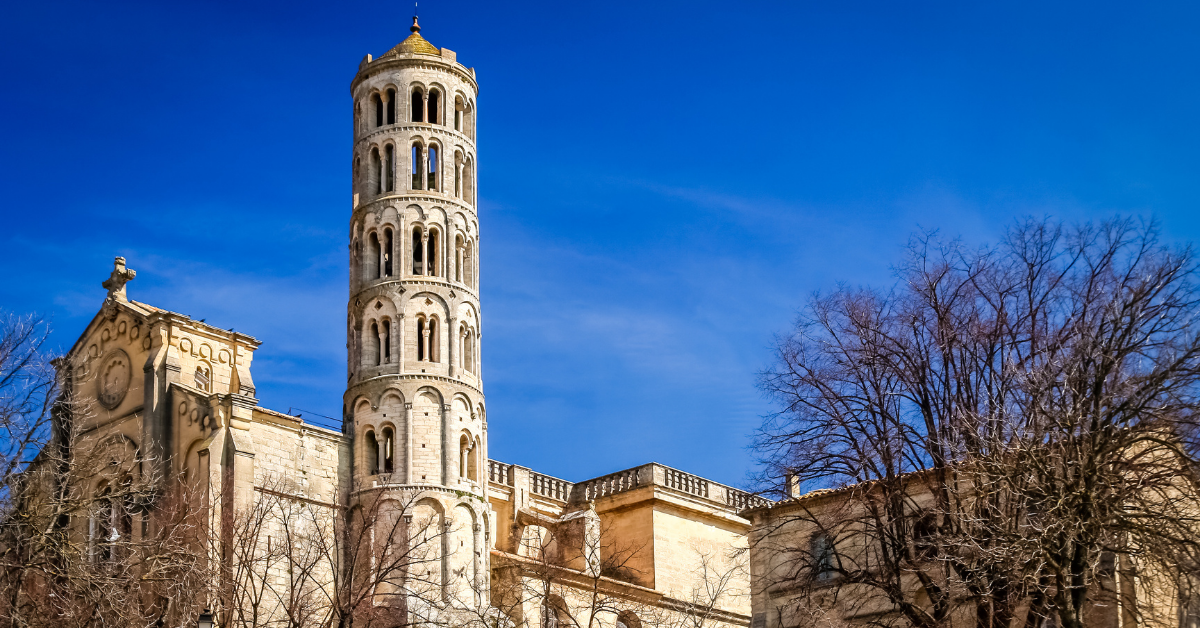
To the west, Sète is a fishing port laced with canals, home to the amusing Musée International des Arts Modestes and to a full calendar of summer festivals. Among the most popular are the joutes nautiques (nautical jousts), a sport unique to Languedoc. These clashes, propelled by rowers instead of horses, were invented by LouisV CIX’s Crusaders while killing time at Aigues Mortes, a spectacular walled port now stranded high and dry in the Petite Camargue.
And the beaches?
In the 1960s, Paris made Languedoc-Roussillon the Florida of France, to detour French holidaymakers (and their cash) from the Costa Brava. Of the new resorts, two are especially popular: the now-quaint, futuristic La Grande Motte near Montpellier; and Le Cap d’Agde, part of which is the biggest naturist resort in Europe. It lies near the old town of Agde. This community is known as Languedoc’s “Black Pearl” for its basalt architecture; it also has gorgeous ancient Greek bronzes in the Musée de l’Ephèbe, dedicated to underwater archaeology.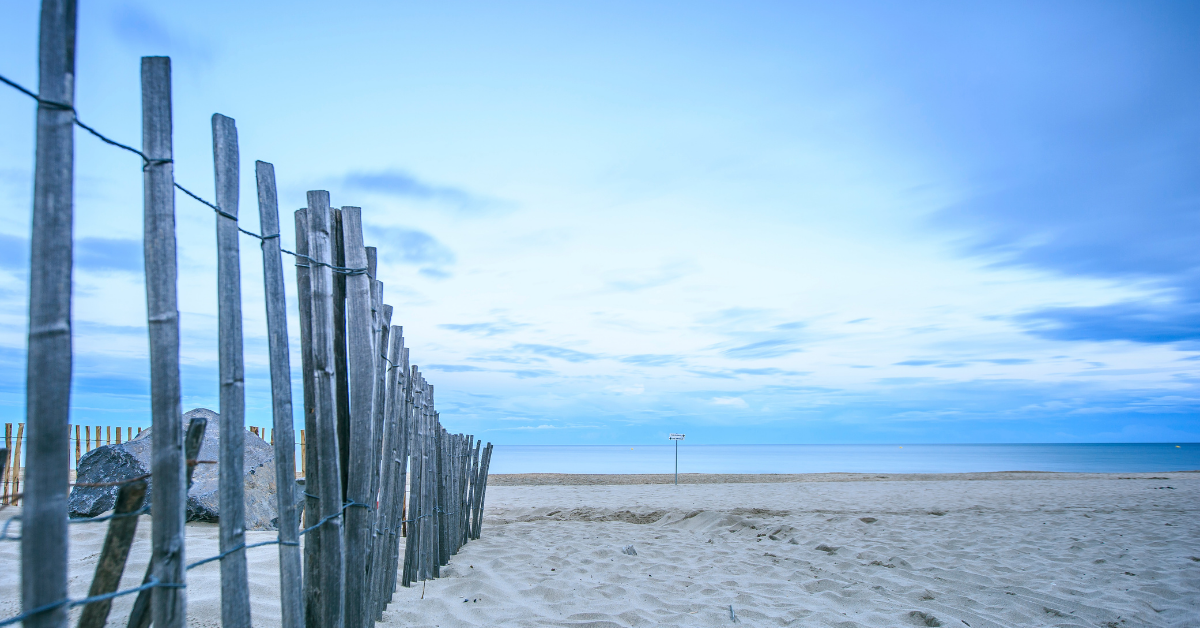
In Roussillon, the white sandy beaches (and resorts of St-Cyprien-sur-Mer and Canet Plage) meet the beautiful Côte Vermeille, where the arty anchovy port of Collioure oozes charm.
Can I work up a sweat?
Oh yes. The Mediterranean Pyrenees are a winter and summer playground, perfect for trekking, kayaking, canyoning, caving, and rock climbing.
The département of the Lozère in northern Languedoc encompasses much of the beautiful Parc National des Cévennes. The park encompasses the 65km Gorges du Tarn and awe-inspiring karstic marvels, sculpted in the limestone: the Gorges de la Jonte, where vultures have been re-introduced; the Grotte de Dargilan, and an abyss, the Abîme de Bramabiau.
If you’ve brought the children, don’t miss clambering over the art installations at the Lozère’s answer to Disneyland Paris, the Vallon du Villaret in Bagnols les Bains.
I’d rather just drift along
Try the Canal du Midi, which links the Mediterranean to Toulouse (then the Atlantic). The canal’s 240km were completed in 15 years (1666-81) by 12,000 workers, who 64 locks. The railroads made it obsolete, but it is now among the region’s prime attractions. You can extend the trip along the Canal du Rhône à Sète, which meets the Rhône at Beaucaire.
And the wine?
The world’s biggest wine region, Languedoc-Roussillon fills some two billion bottles a year. The rocky soil, rugged hills and dry, sunny climate provide perfect conditions for vineyards, a fact first appreciated by the ancient Greeks and Romans. It’s also the home of the world’s oldest bubbly, Blanquette de Limoux (invented in the 16th century) and a range of naturally sweet wines such as Banyuls and Rivesaltes.
Languedoc-Roussillon’s plonk slaked the thirst of the masses during the Industrial Revolution, but in recent decades, its vignerons have made improvements in the quality. Today it’s the world’s most exciting wine region, not only for the 24 AOC wines but its myriad vins de pays, where laxer rules allow more experimentation. An excellent place to learn about them is the Vinécole (00 33 4 4 68 31 64 14) near Limoux, run by English Master of Wine Matthew Stubbs, who offers courses from speed tasting to classes for professionals.
Bon appétit – Flavours of the region
Languedoc-Roussillon’s markets overflow with excellent local ingredients: Bouzigues oysters, Collioure anchovies, olives, seafood, duck and foie gras, beef from the Camargue, truffles from Uzès, fresh fruit (Céret in Roussillon is the cherry capital of France), lamb from the Lozère, charcuterie and goat cheeses from the Cévennes and much more.
The region wasn’t traditionally known for its restaurants, although a new generation of savvy chefs are working hard to change that. Some of the best work at the Ambassade and Octopus, both in Béziers; La Maison de la Lozère in Montpellier, Gilles Goujon at Fontjoncouse, Le Parc Franck Putelat in Carcassonne and the Auberge Saint-Paul in Villefranche-de-Conflent.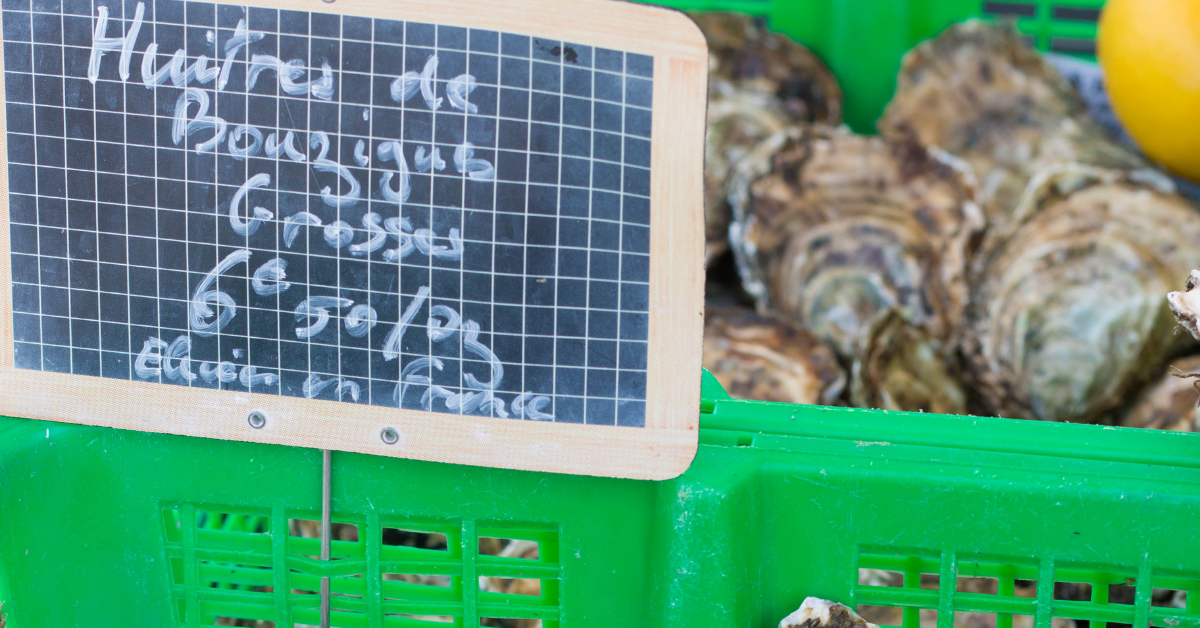
When to go
July and August are high season: the beaches are packed and Languedoc-Roussillon puts on a non-stop array of festivals and ferias. April to June and September to October have cooler temperatures, fewer crowds and lower prices, and are also the best times for walking. Montpellier stays lively all year.
And the best thing?
All these fantastic places are easily accessible from La Calade. We are perfectly situated in the centre of the region.
If you would like to find out more send us an email info@lacalade.fr or you can download one of our free guides
Free Guide
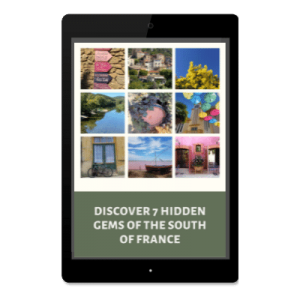
Find out more about places to go
Free Beach Guide
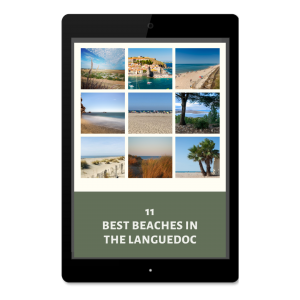
Read about the fantastic beaches
Free Market Guide
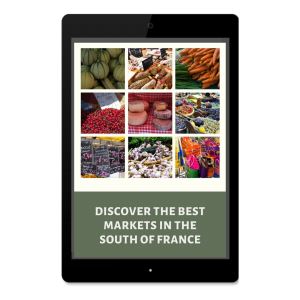
Free guide to Languedoc Markets

